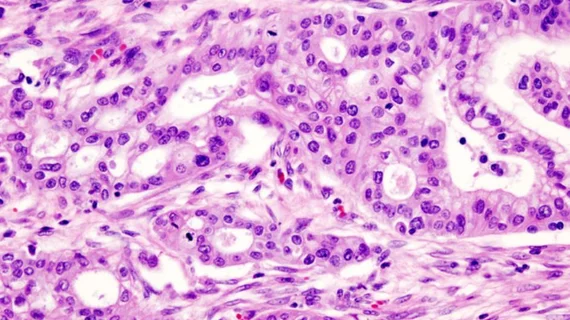Researchers have developed a new “time machine” capable of mimicking the behavior of pancreatic cancer, sharing their findings in Small. The team’s breakthrough could provide valuable new information about this deadly disease.
The time machine in question is “a microfluidic platform where a duct of murine genetically engineered pancreatic cancer cells is embedded within a collagen matrix,” the authors explained. It allowed them to track decades of cancer growth in a matter of weeks. When they team wants to “go back in time” and observe a specific point in the cancer’s progression, they are able to review footage captured by imaging equipment.
“We can observe what happens over a long period of time,” corresponding author Bumsoo Han, Purdue University in West Lafayette, Ind., said in a prepared statement. “This helps us to see trends that we wouldn’t normally see.”
One important aspect of this research was the shape of the artificial pancreatic duct. Compared to other, more traditional methods, it provides much more helpful insight.
“The curvature of the pancreatic duct affects the behavior of cells,” Han said. “We could culture these cancer cells on a petri dish, but because the dish is flat, we wouldn’t see the same behavior.”
Grants from the National Institutes of Health helped support this study. Additional funding came from the Purdue University Center for Cancer Research and Walther Embedding Program in Physical Sciences in Oncology.

